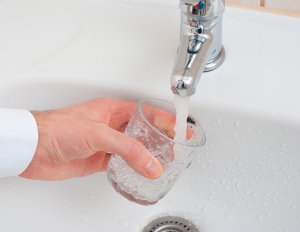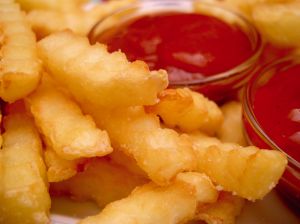Top 10 Questions About the Atkins Diet
1. What is the Nutritional Approach of Atkins?
Named after its founder, Dr. Robert Atkins, this diet is believed to be among the first low carb eating plans. The diet made a revolution in dieting by its moving away from the dominant low-calory, low-fat plans.
The Approach began to enjoy growing popularity in 1972 when the "Father of the Low Carb Craze" published his research on revolutionary dietary methods. Atkins made adjustments in his next books, including exercises for a healthier lifestyle, but remained true to his ideas.
2. Phases of the Atkins diet.
The first phase of the diet lasts two weeks during which the dieter may consume proteins such as fish, chicken, eggs, and lean beef. Nuts, fruit, and alcohol have to be avoided while the consumption of caffeine has to be limited. Drinking lots of water is also recommended.
In the actual weight loss phase, the consumption of carbohydrates increases by five grams each week. This phase lasts until one's weight is in the range of four to five kg of his or her weight goal. Starchy vegetables, fruit, nuts, fresh cheese, seeds, and whole grains are reintroduced in the diet.
During the third pre-maintenance stage, the intake of carbs goes up by ten net carbs per week. The last phase of the diet aims to turn the freshly acquired habits into a life long practice.
The Atkins dietary plan promises better health and weight loss while eating foods that are prohibited with other diets. Yet, responding to the misconception that his diet promotes the consumption of unlimited amounts of fatty cheeses and meats, Dr. Atkins notes that the diet is "not a license to gorge."
3. What do the scientists say about Atkins?
The Atkins Diet is centered on its creator's idea that overweight is the result of improper eating habits in the West which involve the consumption of excessive amounts of carbohydrates (flour and sugar). Atkins claims that when people consume lots of carbohydrates, their bodies cannot burn the whole amount and a part of it is stored as fat. Lower intake of carbohydrates prompts more efficient burning of fat. When the body begins to use its own fat as an energy source, it switches to a state called ketosis, which makes one feel less hungry.

The diet remains surrounded by question marks and controversies and the benefits are still unproven, with most concerns stemming from the lower consumption of fiber, vegetables and fruits.
Studies, conducted in USA in the 2000s, ranges from rave reviews trough reservations to full denunciation. Studies showed that Atkins dieters lost weight faster, lost more body fat, lowered their triglyceride levels, improved bone density and raised their "good" HDL cholesterol. Some studies also found that consuming low-carb food can lead to reduced risk of various heart diseases, along with possible benefits to people with cancer, diabetes, and epilepsy. Research further shows that high protein diets are pretty much safe, especially in the short term.
Concerns include the lack of vital nutrients and potentially harmful emotional and metabolic and side-effects.
All this leads to the conclusion that low carbohydrate diets can no longer be dismissed. And, since much of our overeating has to do with consumption of too many carbohydrates, when they include healthy sources of protein and fat and incorporate regular exercise, those plans are a good choice for people who wish to lose weight.
4. How does Atkins affect my health?
As Dr. Atkins warns - anyone, who wants to follow his diet plan must first consult a doctor. The positive effects from burning fat include lower insulin levels, lower body fat, achieved through ketosis, reduced hunger and cravings compared to other diets, all leading to lowered symptoms of depression, fatigue, headaches and joint pains, better metabolism, better sleep, improved blood pressure and cholesterol levels.
On the downside are the insufficient amounts of fiber, vitamins and other and nutrients which should be compensated by the regular intake of supplements. Also, some people who quit the diet when they reach the maintenance phase gain back the same or even more weight.
In conclusion, the positive effects depend on how strictly one adheres to the plan and to the recommendations of combining it with supplement intake and regular exercise.
5. What exercise can I do on Atkins?
Exercise is an important part of keeping the weight off when following the diet plan. Exercise also allows the consumption of moderate amounts of fruit, vegetables, beans and whole grains. To start off a fitness program, Atkins suggests participating in aerobic exercises and/ or using any type of exercise equipment.
However, for those who have too much weight to lose or cannot afford to join a gym, any type of movement is recommended such as walking, climbing stairs, even carrying grocery bags or doing household chores. As the weight goes down - one can add running, swimming or riding a bicycle.
6. Can I drink alcohol on Atkins?

Alcohol is banned during the induction phase because the body burns alcohol first and this process will postpone weigh loss. Another downside of alcohol consumption is increased sugar cravings and hunger on the next day.
During the next three phases of Atkins, moderate amounts of alcohol are allowed such as red and white wines and some hard alcoholic beverages like scotch, bourbon, rye and vodka. Rum is a no no since it is made from sugar cane as are cocktails that include fruit juices and sugar. Good mixers are diet sodas and carbonated water. Beer must be avoided as well because of the high yeast content, and if you prefer to drink beer, it is better to resort to the lighter types.
7. Why do I have to drink so much water on Atkins?
The usual recommendation is 8 glasses, and this does not include caffeinated drinks because of their diuretic effects, nor diet sodas. Water has many benefits so drinking plenty of it is not just an Atkins advice. Water flushes toxins and prevents dehydration, especially during hot weather and exercise when one sweats intensely. It regulates body temperature, speeds up the carrying of nutrients and oxygen to the cells and the transformation of food to energy.
Drinking ample quantities of water helps reducing fatigue, keeping energy up and weight down, prevents nausea, heat strokes and light-headedness. Those consuming enough water have more supple joints, stronger muscles and better digestive system. Sometimes, when we are thirsty, we might feel hunger and think the body needs food while it is simply asking for water. Drinking water will help to avoid reaching for food in addition to the filling effect.
It must also be noted that in the very first days, the weight loss comes from water loss. The lower levels of insulin lead to retaining less sodium and thus less water, triggering a diuretic effect. This is why drinking water is important. After the first 3 to 4 days, the dieter will also begin losing weight.
Bear in mind, there is also a thing as too much water. If one drinks more than eight liters without getting other nutrients, the body begins to deplete itself of them.
8. What to do if hungry or having cravings?
The diet allows for plenty of food and this is why, compared to the low-calorie diets, hunger cravings are a less frequent occurrence. But because the plan, especially in the initial stages, bans sugar, flour and starch, its real negative side effect is cravings for sweets, bread and pasta which can even lead to withdrawal symptoms. With time, however, the body adjusts to the reduced levels of blood sugar. Sugar cravings become easier to deal with though they never fully disappear.
To avoid cravings, the dieter should never skip meals and must have plenty of snacks, such as cheese, nuts, seeds and boiled eggs, handy. Vitamins are also needed because deficiency in magnesium, zinc, or chromium is proven to trigger sugar cravings. Drinking water or distractions such as walking are also recommended. Other, more unconventional tricks, include regular teeth brushing and using breath strips to numb the mouth. And if everything else fails, eating the low carbohydrate version of the treat that you like the most is always a solution.
9. Can I eat fried foods?

Fried foods offer variety thus allow the dieter to enjoy the plan even more. At the same time, they do not have a negative effect on the body's new metabolic state.
Atkins, however, recommends broiling and roasting meat as a better option due to the harmful effects of the trans fats created by the frying process. Trans fats increase significantly the risk of Type II Diabetes, lower the amount of good cholesterol and raise the amounts of the bad one. This is why margarine, vegetable shortening, and partially hydrogenated vegetable oil should be avoided. Polyunsaturated and monounsaturated good fats need to be used whenever possible. Another important point is that fried food consumption should not include, particularly during the induction phase of Atkins, breaded food such as deep fried chicken made with bread crumbs or flour.
10. Is it ok if I'm losing weight too quickly?
When people begin the Atkins induction stage, many experience rapid weight loss which could be scary. This, however, is the goal of the Atkins plan, so it should not be a reason for alarm.
Losing weight too quickly can be harmful if one is not eating enough which can lead to the loss of muscle mass. This is why regular meals and plenty of snacks are a must. Another alarming issue is when weight loss is accompanied by feeling sick, weak, tired and/ or dizzy due to an extreme diuretic effect. In this case, the dieter needs to add more vegetables and mineral supplements to slow down the weight loss.
For people who just want to shed a few pounds, it is recommended that they follow a shorter induction stage and move faster to the other stages, depending on the targeted goal. Some negative side effects of losing weight too rapidly can include loose or sagging skin, and gallstones.
